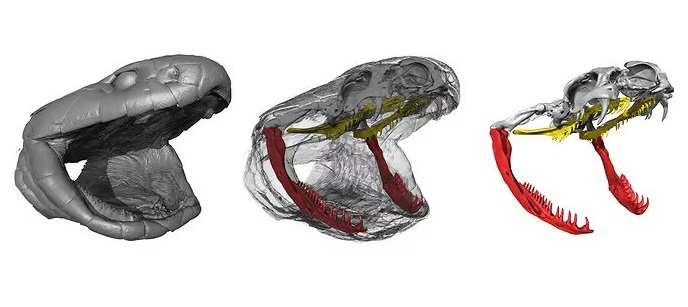An Australian study discovered that snake skulls can develop within a few generations to adapt to different diets.
The study, which was published on Monday by the University of Adelaide, discovered that when tiger snakes are given larger prey, the bones in their jaws increase.
Researchers studied two tiger snake populations, one on the mainland and one off the coast of Western Australia on Carnac Island (WA).
Due to a lack of smaller prey such as frogs on Carnac Island, the snakes have had to rely on eating enormous chicks of seabirds that were up to three times larger than their regular diet to live.
While evolution can take millions of years in some cases, the University of Adelaide scientists discovered that significant natural selection pressure had caused the snakes’ skull form to change.
Since they were introduced to the island less than a century ago, they have been able to swallow the chicks whole.
“Much like an athlete’s body changes shape with intense training, an island tiger snake’s skull adapts to the food it needs to survive,’’ Alessandro Palci said.
Palci is a senior author of the study from the School of Biological Sciences at the University of Adelaide, said in a media release.
“Skulls of island tiger snakes are better able to change their growth when trained on different foods.
“The ability to change head shape during a lifetime as a result of diet increases these tiger snakes’ abilities to survive in environments such as islands where there is unusually large prey,’’ said Palci.
The tiger snake is one of the most common snakes in Australia and one of the most venomous species in the world









